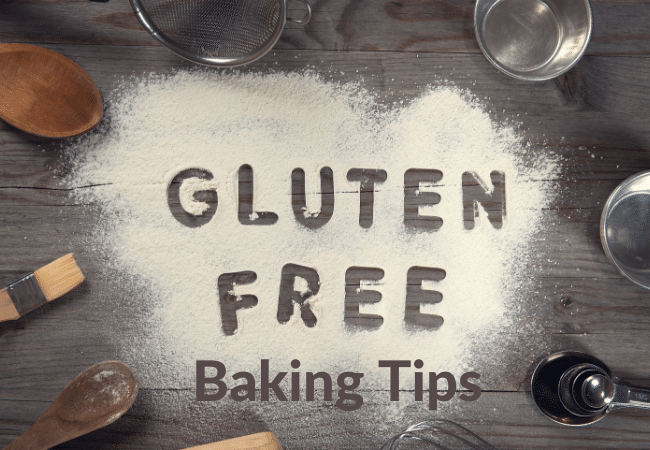If you’re a newcomer to gluten-free baking, you’ll want to review the following tips before you start baking anything.
Unlike cooking, where you can easily swap out one ingredient for another, baking is precise and less amenable to substitutions. Gluten-free baking requires even more attention to detail. For a happy and delicious outcome, be mindful of the following:
1. Read a recipe all the way through—at least once—before you start anything. Baking demands accuracy and precision. If you are using a recipe to bake something that you have never made before, follow that recipe to the letter. This is not the time to change and switch up ingredients or to get creative on the fly.
2. Take inventory. Go through the entire ingredients list and make sure you have all the ingredients first. Gluten-free flours or other ingredients may not be available at your local supermarket. If you need to order any ingredients online, allow enough time for arrival.
3. Check to make sure you have the correct-size loaf pan, cake pan or baking sheet. The type and size of bakeware you use can affect the texture and moistness of the final outcome, as well as baking time. For example, I once made a gluten-free coffee cake without first checking to see if I had the proper-sized loaf pan. Turns out, I did not have a loaf pan and poured my batter into an 8-inch square baking pan. The result? A flat, “crispy” and inedible coffee cake!
4. Double-check oven temperature. Make sure you preheat oven to the correct temperature.
5. Always keep unbleached parchment paper on hand. Line baking pans and baking sheets with parchment paper to prevent sticking. Using parchment paper is better than using non-stick bakeware, which contain toxic, hormone-disrupting chemicals.
6. Measure precisely. Don’t wing it! Use standard measuring spoons and measuring cups (stainless steel measuring cups for dry ingredients and glass Pyrex measuring cups for liquids). And when you measure out dry ingredients, like almond flour or cacao powder, use a butter knife to level for precise measurement.
7. Sift gluten-free flours. Gluten-free flours, like almond flour, coconut flour, buckwheat flour and tiger nut flour, tend to clump. It does take a little extra time, but, for best results, use a hand-held sifter or sieve to dissolve lumps.
8. Use quality ingredients. For best results, use quality, fresh and organic (whenever possible) ingredients. For example, always check the expiration date when you buy a gluten-free flour, like coconut flour. If a recipe calls for maple syrup, be sure to get 100% pure or organic maple syrup—do not use “maple-flavored” pancake syrup. You get what you bake with!
9. Be mindful not to overmix ingredients. Gluten-free flours tend to be more delicate, so it is important not to overmix ingredients. Otherwise, you can end up with a stiff dough and an end product that is dry and tough. In gluten-free recipes, you will often be asked to “fold ingredients” together. Folding ingredients means adding the delicate, dry ingredients, like raw cacao or gluten-free flour, to the wet ingredients (e.g., beaten eggs and coconut milk). To fold together, use a large spatula to cut through the center of the dry and wet mixtures, bringing the heavy mixture back to the top in a down-across-up-and-over motion. Continue until mixture is just combined—no more.
10. Set a timer for the halfway mark. For example, if a recipe for gluten-free brownies says to bake for 30 minutes, set the timer for 15 minutes. When the timer goes off, turn the brownie pan, then bake another 15 minutes for even baking.
11. Allow enough “rest” time. Once you remove your gluten-free cookies, brownies or cake from the oven, allow it sufficient time to cool; this enables the flavors and texture to “set up”, and it will also be easier to remove from the pan.


